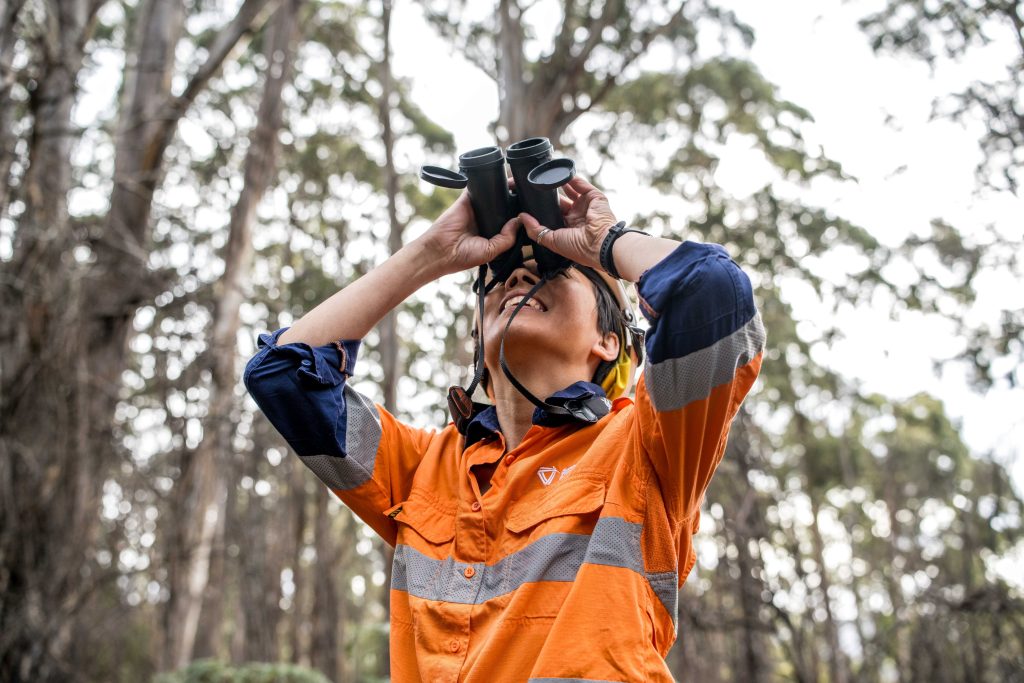The Swift Parrot Monitoring Program
Our Swift Parrot Monitoring Program, now in its fifth year, helps us find and manage potential breeding habitat in Tasmania’s public production forests.
We use real-time acoustic monitoring and on-ground surveys to:
- Detect swift parrot activity across the landscape
- Protect active breeding areas
- Adjust forestry operations during the breeding season
This adaptive approach reduces disturbance and gives swift parrots the best chance to breed successfully.
Adapting forest management to support recovery
By tracking Swift Parrot activity, we can align our forest practices with the species’ needs.
This means Tasmania’s public production forests ensuring Tasmania’s public production forests can support both sustainable timber harvesting and wildlife conservation.
Real-time monitoring in action
We use a combination of acoustic monitoring and targeted field surveys to detect swift parrot activity across the landscape. These tools provide real-time insights that help us:
- Identify active breeding areas
- Minimise potential disturbance during critical breeding seasons
- Adapt forest operations as needed throughout the season
Acoustic monitoring technology
We take a science driven, and technology forward approach to conservation.
Our Acoustic Monitoring Program uses advance machine learning to recognise calls of species like the swift parrot and masked owl.
- Collects thousands of hours of data on bird presence and breeding
- Covers large areas at low cost
- Runs for days or weeks on a set schedule
- Delivers fast, reliable information for habitat management
Once recordings are processed, we can quickly spot breeding activity and adapt our operations.
2024 Season Wrap
During the recent 2024 breeding season, our research and operation teams:
- Pre-season bud surveys across 129 sites for foraging potential across Tasmania
- Deployed 45 acoustic recorders across 16 forest coupes
- Spent 26 days in the field on surveys and assessments
- Collected over 10,000 hours of acoustic data
- Over 1,250 hours of data have been processed for flight, warbling, and chick call detections
We recorded successful breeding around the Eastern Tiers and detected fledglings at Snow Hill area in late January 2025.
Foraging was observed and signs of activity heard, which was positive for the breeding season.
Commitment
We take seriously our role as an expert and active land manager who is committed to protecting important species and breeding habitat.

